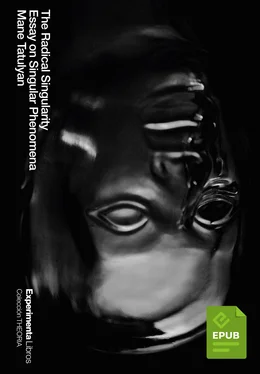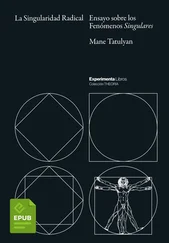For the epistemic order of the Enlightenment, history (like physics) developed according to a fixed, immanent, irreversible and universal law; the straight line of Progress was the sense of the betterment of humanity. For the metastatic disorder of Postmodernity, the sense of historical continuity is totally pulverised by the annihilation of the idea of progress (which has further freed itself from its original meaning to become an indefinite and indifferent outgrowth). There is no longer historical unity nor the unifying power of Reason; that leading thread that Kant spoke of has been broken; that intention that Nature had hidden in the human being (and in history) to be discovered and practiced has vanished.«For example, the idea of progress has disappeared, yet progress continues» Baudrillard tells us. Progress continues, but in the politically correct version of it, what we call progressivism . The fossil clone of progress made us believe that radically liberated things work better, but it resulted in a society that lost criteria for having lost critics (which is the first sign of the annihilation of Modernity). This society, due to its lack of references, was condemned to an unbearable dualism: Zen but positivist, tribal but cyborg, vegan but tech, sexually liberal but dogmatic, revisionist but sceptical. Who would say that progress would become a type of involution or, worse still, a paralysis (of history and ultimately of thought).
Postmodernity is, in essence, an age of ruins. But our ruins are not like Luxor or the Acropolis, which have survived time or that resist oblivion due to their symbolic and historical grandeur. Conversely, ours are ruins without History and without time. Nothing we create seems to survive time (although what was left to us does not survive either). More than an era of ruins, Postmodernity is a great generator of waste. Environmentalism is nothing more than the artificial homeostasis of globalisation (a kind of collective photosynthesis that suddenly tries to take over all the waste of humanity). Everywhere we see an environmental boom: the «Green New Deal», «Fridays For Future», plant and animal rights (despite continuing violence against the human being). Green activists and the Greta Thunberg clan tell us about nuclear and industrial waste, but they never mention all the historical and ideological waste that we generated when we destroyed Modernity. Has anyone asked Greta Thunberg what we will do with all the waste of Modernity? What about progress? And human thought? What will happen to the fossils of history? Can they biodegrade in the information biosphere, or will they float like satellites? Does anyone know why we don’t talk about digital pollution? Where do all the leftovers from the media and networks go? And all those humans whose labours were replaced by machines? What’s more, is the human species also on the list of endangered species?
Modernity is to Postmodernity what the phantom limb is to the body. We amputated Modernity because we no longer needed that unbearable residue of History, but for some reason, we still secretly feel its presence (or absence). We still perceive sensations deriving from the missing limb, which somehow remains connected to the body and continues to function with it virtually. We are still in the postoperative period, the operation being the zero degree of rupture and liberation. Hence, even its own term, Postmodernity , evidences that we are in an era that does not even define itself for what it is but rather for what it ceased to be (hence its prefix «post», that is, everything that comes after Modernity, but it goes not have its own definition or noun and acts as a prosthesis or cancer metastasis). We no longer know what to do with the corpse of Modernity. Nor do we know if Modernity is the ghost that haunts us, or if we are the phantasmagoric spectre of Modernity’s death.
It is also no coincidence that our current time is the Digital Age. Even the screens themselves are secretly always reflecting our ghostly image, our holographic clone from the cybernetic afterlife. The hologram is not a shadow, a portrait or a spirit. The hologram is the radiation of the subject that disintegrates due to technique, it is a light and artificial clone that is pixelated on the computer screen. The most interesting thing about this virtual double is that it is always there , but we never manage to see it because of the light whitening of the screen. Our own image is erased in front of us. Only the ghostly clone of virtual reality survives. We are visible to the machine but holograms to ourselves. Perhaps this was the function of technology: to remind us of our own disappearance; and it is precisely because the machine has replaced the human being that we try to become machines (so as not to lose ourselves in oblivion).
1- Habermas, Jürgen. The Philosophical Discourse of Modernity. Polity Press, 1987. P. 13.
2- Habermas, Jürgen. The Philosophical Discourse of Modernity. Polity Press 1987. P. 13.
The Epidemic of Liberation
When things, signs or actions are freed from their respective ideas, concepts, essences, values, points of reference, origins and aims, they embark upon an endless process of self-reproduction. […] Could it be that all systems, all individuals, harbour a secret urge to be rid of their ideas, of their own essences, so as to be able to proliferate everywhere, to transport themselves simultaneously to every point of the compass? In any event, the consequences of a dissociation of this kind can only be fatal. A thing which has lost its idea is like the man who was lost his shadow, and it must either fall under the sway of madness or perish.
Jean Baudrillard, The Transparency of Evil
One of the consequences of decomposition is the release of energy. The decomposition of Modernity was the beginning of this epidemic of liberation that spread throughout all spheres and in which we have detached ourselves from the referential nuclei of things. Sexual liberation, the liberation of women, the liberation of animals, political liberation, spiritual liberation, the liberation of energy: all events are accelerated until they reach a kinetic energy that can expel them even from their own Idea. Acceleration propels particles into a space of total indeterminacy and uncertainty, into a stage where they no longer even respond to themselves. Newton’s second law states that the acceleration of an object is inversely proportional to the mass of the object. That is, the greater the mass of an object, the less its acceleration will be if a given net force is applied to it. For this reason, it is necessary for things to fragment into tiny particles, to become atomic, if they are to accelerate their path of liberation. Luckily in the technosphere this is not a problem since information can enter networks and computers for its infinite circulation and reproduction.
Behind liberation lies a secret: infinity. Things freed from their Idea are condemned to infinite reproduction. Expelled from their orbit, the particles are liberated from their centre and infinitely float in outer space. The Idea is what organises a form; disorder begins with its loss, with the forgetting of that meaning. Each released particle is infinitely reproducible, inserted in the vacuum of space for viral propagation and circulation. What is liberated is free to interchange and fully available to be manipulated and exchanged since it no longer has references or principles. That is why today everything is «trans» since things go beyond themselves and are free to exchange the signs of all discourses, which leads to total confusion and the impossibility of determining stable criteria for things (the logical consequence of the illogism post-truth).
Читать дальше












